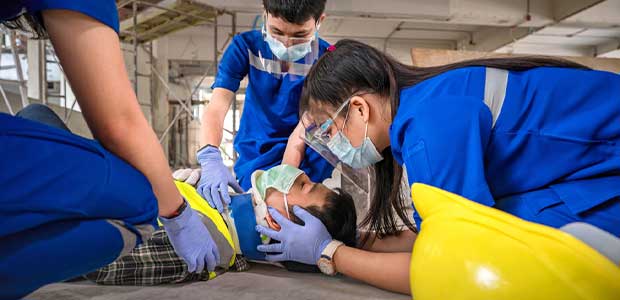
New White Paper Looks at Serious Injuries, Fatalities from 2017 to 2021
Although data found the rate of SIFs decreased from 2020 to 2021, employers need to continually work to prevent these events from happening.
- By Alex Saurman
- Apr 12, 2023
A new white paper from ISN examines serious injuries and fatalities in a five-year time frame, as reported by contractor companies across the country.
Per the paper, Serious Injury and Fatality Insights - A Five-Year Exploration of Contractor Incidents (which adds to information from a 2021 white paper), over 50,000 U.S. contractor companies responded to an ISN questionnaire on incidents from 2017 to 2021. From these (including the 2,797 respondents who “reported SIFs and submitted an OSHA 300 Log”), 94,560 incidents and 20,023 SIF cases were identified.
For the paper, ISN used OSHA’s definition of severe fatalities: “an amputation, in-patient hospitalization, or loss of an eye.” ISN’s analysis determined that in the five-year time frame, there were 2,773 amputations, 17,264 hospitalizations and no eye losses. Out of the more than 20,000 cases, there were 677 fatalities.
Every year, more than 40 percent of SIF events were caused by contact with an object or equipment, with 2021 seeing the highest rate at 48 percent. The other causes listed in the paper include falls, slips and trips as well as overexertion and bodily reaction.
The most common nature of the SIF also stayed consistent year over year—sprains, strains and tears were always the leading nature, though fractures and dislocations weren’t too far behind. The largest percentile difference between the two was in 2017 when 32 percent of SIF events were sprains, strains and tears and 23 percent were fractures or dislocations. In 2021, sprains, strains and tears only outranked fractures and dislocations by three percent (27 percent and 24 percent, respectively).
We’ve looked at the cause and the nature, but what about the affected body part? Over the five years, the leading body part has always been the upper extremities. The lower extremities was the second-most common body part, with the trunk being third. In 2021, only a four percent difference separated upper extremities (37 percent) from lower extremities (33 percent).
Understanding how frequently SIFs occur and in what capacity can help employers and other stakeholders make changes and decisions that are best for their employees. To help jumpstart the process, let’s look at a few leading indicators that can impact SIF rates.